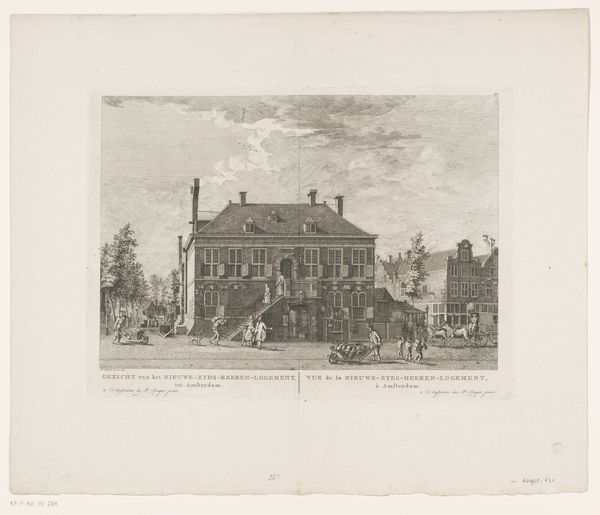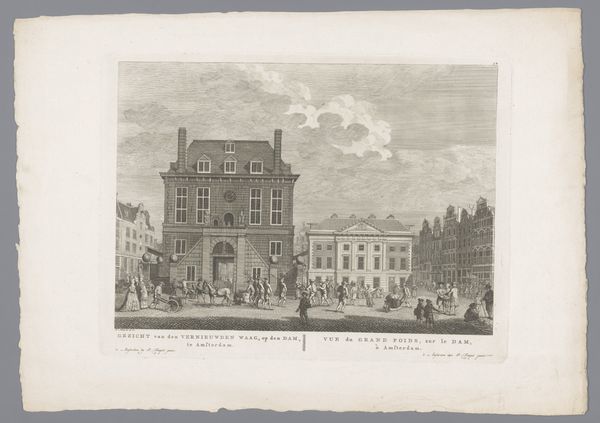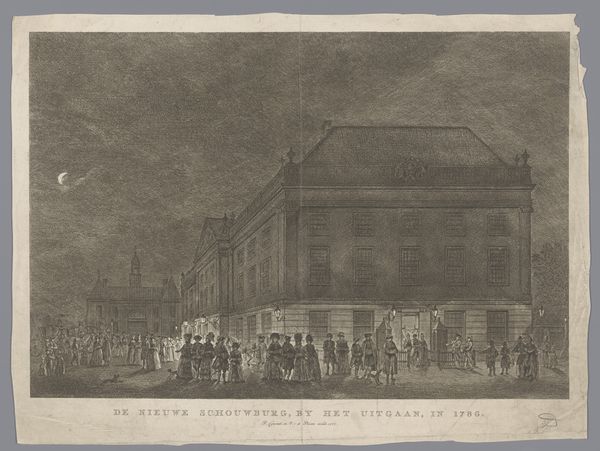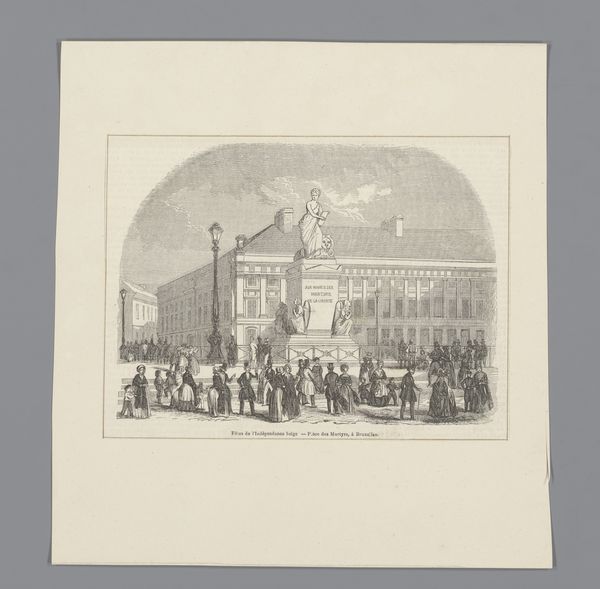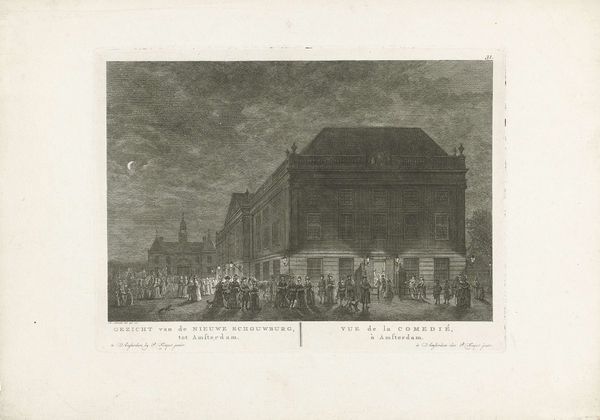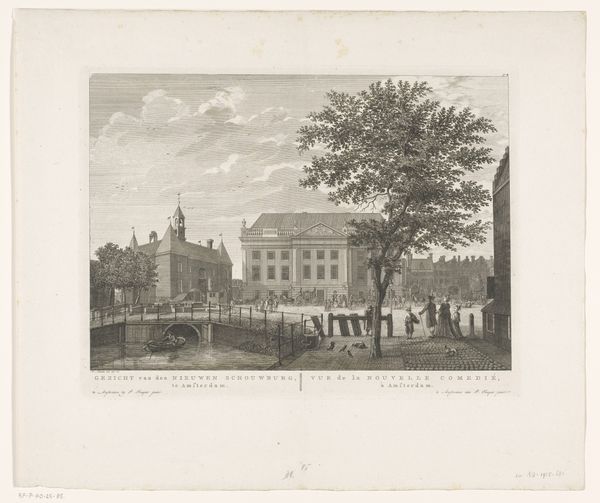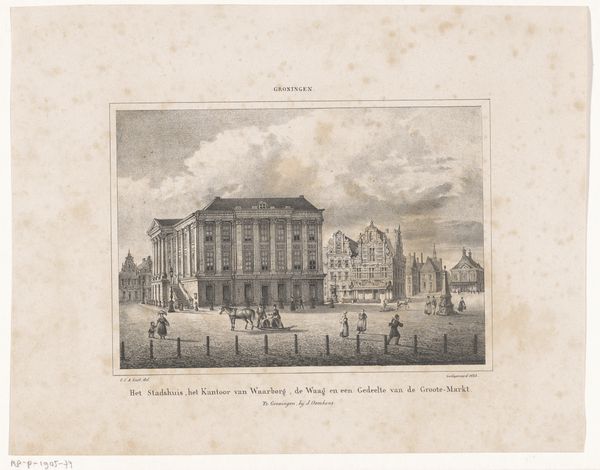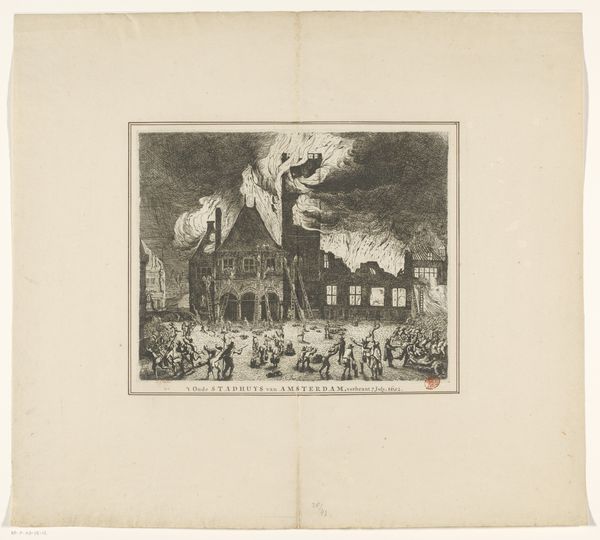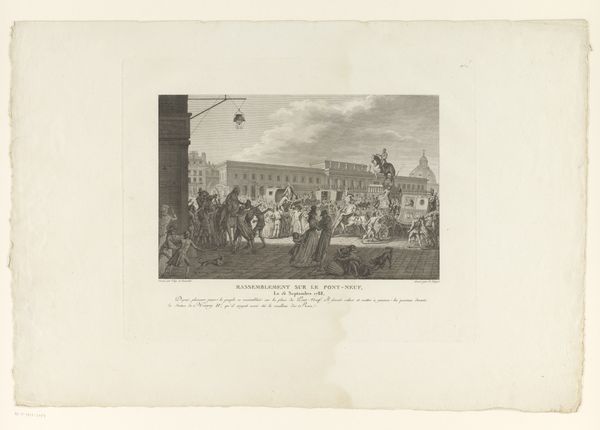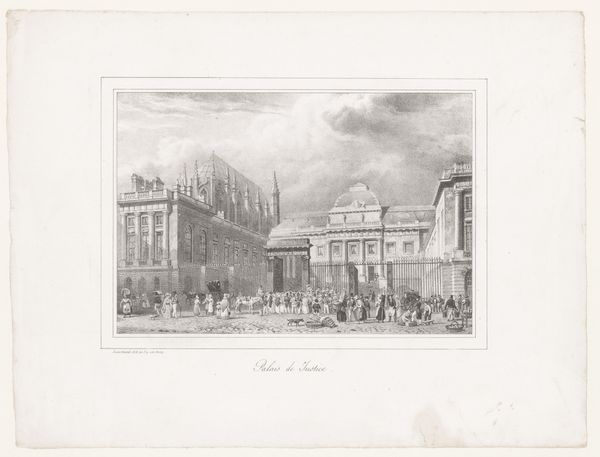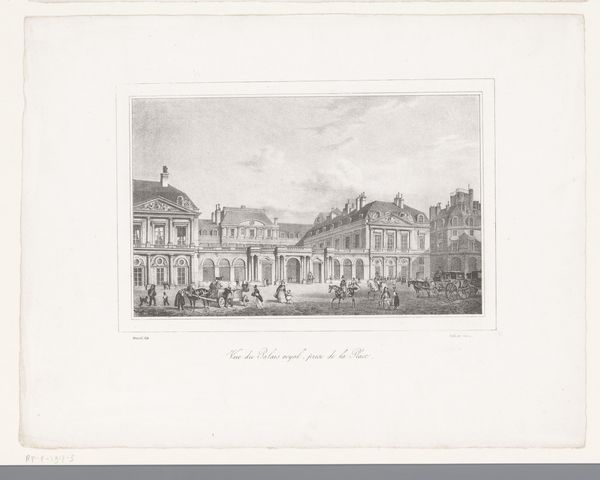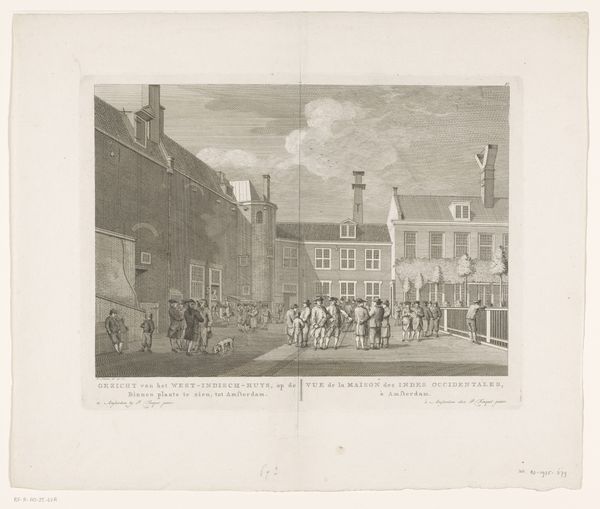
Gezicht op de Amsterdamse Schouwburg op het Leidseplein bij avond 1774 - 1783
0:00
0:00
hermanuspetrusschouten
Rijksmuseum
Dimensions: height 266 mm, width 360 mm
Copyright: Rijks Museum: Open Domain
This print, showing the Amsterdam Theatre on Leidseplein at night, was made by Hermanus Petrus Schouten using etching and engraving. Schouten would have started with a copper plate, carefully coating it with a waxy, acid-resistant substance. He then used a sharp needle to draw the design, exposing the metal beneath. The plate was immersed in acid, which bit into the exposed lines, creating grooves. Finally, ink was applied to the plate, filling the etched lines. The surface was wiped clean, and the image transferred to paper under high pressure. The tonal range achieved by Schouten results from labor-intensive cross-hatching, lending depth and atmosphere to the scene. But it also reminds us that printmaking, while capable of capturing social life with great fidelity, was itself a product of specific social conditions. The highly skilled labor, the division of creative and production tasks – all speak to a complex relationship between art, industry, and the burgeoning public sphere. This print blurs the boundaries between fine art and commercial craft, offering a glimpse into the cultural landscape of 18th-century Amsterdam.
Comments
No comments
Be the first to comment and join the conversation on the ultimate creative platform.
